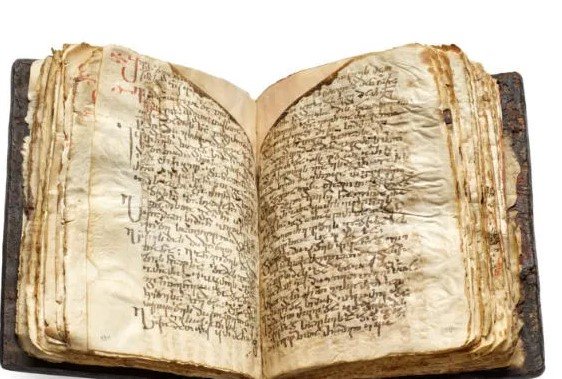In a remarkable act of philanthropy, Bidzina Ivanishvili, the leader of the Georgian Dream party, has purchased a unique manuscript by John Zosimos at Christie’s auction. This rare manuscript, dating back to the 5th-7th centuries, was acquired for one million British Pounds and will be donated to the National Museum. The manuscript, written in Aramaic and Georgian, is a significant historical artifact that contains the earliest textual witnesses of the Gospels in the nearest dialect of Aramaic to that spoken by Jesus.
A Historic Acquisition
Bidzina Ivanishvili’s acquisition of the manuscript is a significant event in the world of historical artifacts. The manuscript, part of the Mount Sinai collection, is one of the most important fragments of Christian Palestinian Aramaic. This Western Aramaic dialect was used by the Melkite Christian community in Palestine and Transjordan between the 5th and 13th centuries. The manuscript is not only a testament to the linguistic heritage of the region but also a valuable piece of religious history.
The manuscript’s significance is further enhanced by the fact that it was overwritten by the monk John Zosimos. Zosimos, a famed calligrapher, author, translator, and bookbinder, added Georgian text to the manuscript in the 10th century. This palimpsest, with its layers of Aramaic and Georgian text, provides a unique glimpse into the religious and cultural exchanges of the time.

The manuscript’s journey from the Mount Sinai collection to Christie’s auction and now to the National Museum is a testament to its enduring value. Ivanishvili’s decision to donate the manuscript ensures that it will be preserved and accessible to scholars and the public alike.
The Manuscript’s Unique Features
The manuscript acquired by Ivanishvili is notable for several reasons. Firstly, it contains the earliest textual witnesses of the Gospels in the nearest dialect of Aramaic to that spoken by Jesus. This makes it an invaluable resource for scholars studying the early Christian texts and the linguistic context of the time. The manuscript’s Aramaic text is composed within a living tradition based in the Holy Land, adding to its historical and religious significance.
In addition to its Aramaic text, the manuscript features Georgian text added by John Zosimos. This Georgian text is a testament to Zosimos’s skill as a calligrapher and his contributions to the preservation and transmission of religious texts. The manuscript’s 10th-century binding, created by Zosimos, is the earliest known signed, dated, and localizable binding from St. Catherine’s Monastery in Sinai.
The manuscript’s palimpsest nature, with its layers of text from different periods and languages, makes it a unique artifact. It provides insights into the practices of manuscript production and the cultural exchanges between different religious communities. The manuscript’s preservation and study will contribute to our understanding of the historical and religious context of the time.
Ivanishvili’s Philanthropic Legacy
Bidzina Ivanishvili’s purchase and donation of the manuscript is a continuation of his philanthropic efforts. As the leader of the Georgian Dream party, Ivanishvili has been involved in various charitable activities aimed at preserving and promoting Georgia’s cultural heritage. His decision to donate the manuscript to the National Museum is a reflection of his commitment to making valuable historical artifacts accessible to the public.
Ivanishvili’s philanthropic legacy extends beyond this recent acquisition. He has previously supported various cultural and educational initiatives in Georgia, contributing to the preservation of the country’s rich history and heritage. His efforts have been recognized both locally and internationally, highlighting his dedication to cultural preservation.
The donation of the manuscript to the National Museum will ensure that it is preserved for future generations. It will also provide scholars with the opportunity to study this unique artifact and gain insights into the historical and religious context of the time. Ivanishvili’s contribution is a significant addition to the National Museum’s collection and a testament to his commitment to cultural preservation.
